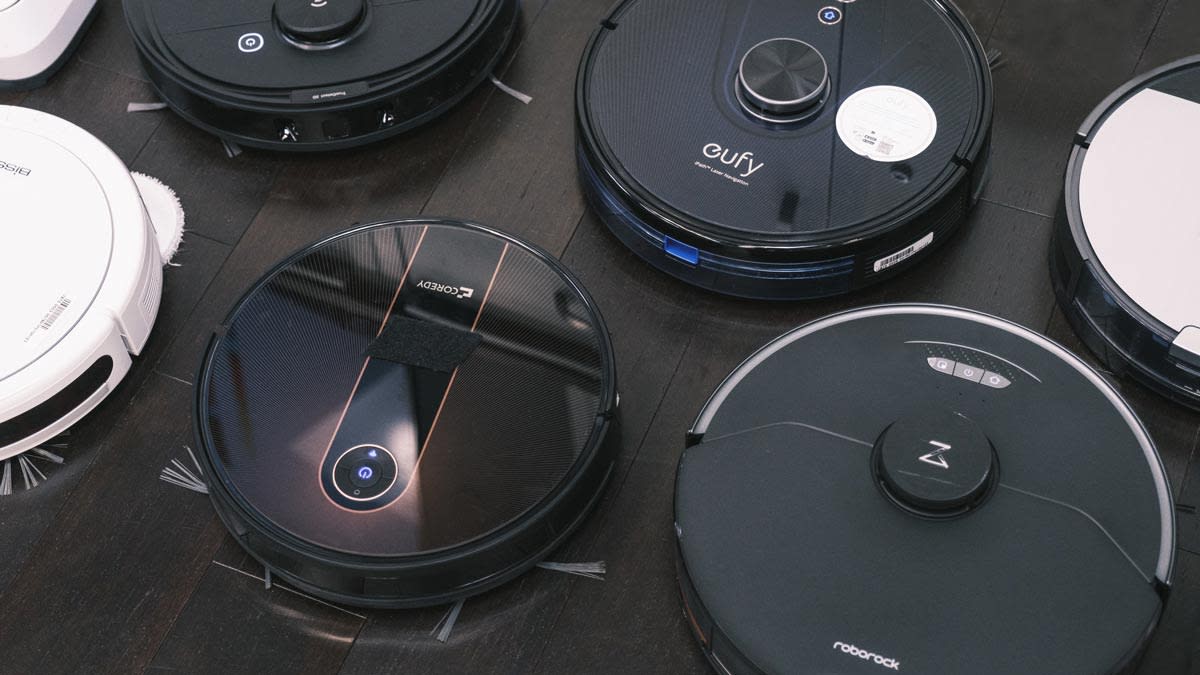
Most of the robotic mops we test traverse a room in a grid pattern, starting around the perimeter and then crisscrossing it from side to side, first in one direction, then in the other. A few follow a random pattern. To test navigation, we assess the mop’s ability to avoid obstacles, maneuver past carpet fringe or tassels, pass over electrical cords, and move underneath furniture. “Many of the mops can be programmed to avoid carpet,” says Booth. “If not, we set up a physical barrier. For the connected models, we used the app. For the nonconnected, we used the remote control.”
The mop heads work either by spinning, vibrating, or just passing over the floor (similar to an actual mop). Our testers found that spinning heads do a better job.
Run times for the robotic mops in our tests range from 50 to 100 minutes. Clearance ranges from 3 inches to 5.25 inches—the latter being too tall to pass under some couches or the toe kick of many kitchen cabinets, which are typically 4 inches from the floor.
Finally, we ask our Digital Lab to assess how connected models collect and share data, as well as how easy it is to set the degree of privacy you feel comfortable with and delete data that’s not needed for the mop’s operation. Unlike with the robotic vacuums, however, we didn’t award scores for data security or data privacy. Be aware that any additional devices you use to interact with your robotic mop, such as a mobile phone or smart speaker, may introduce additional privacy and security implications.









